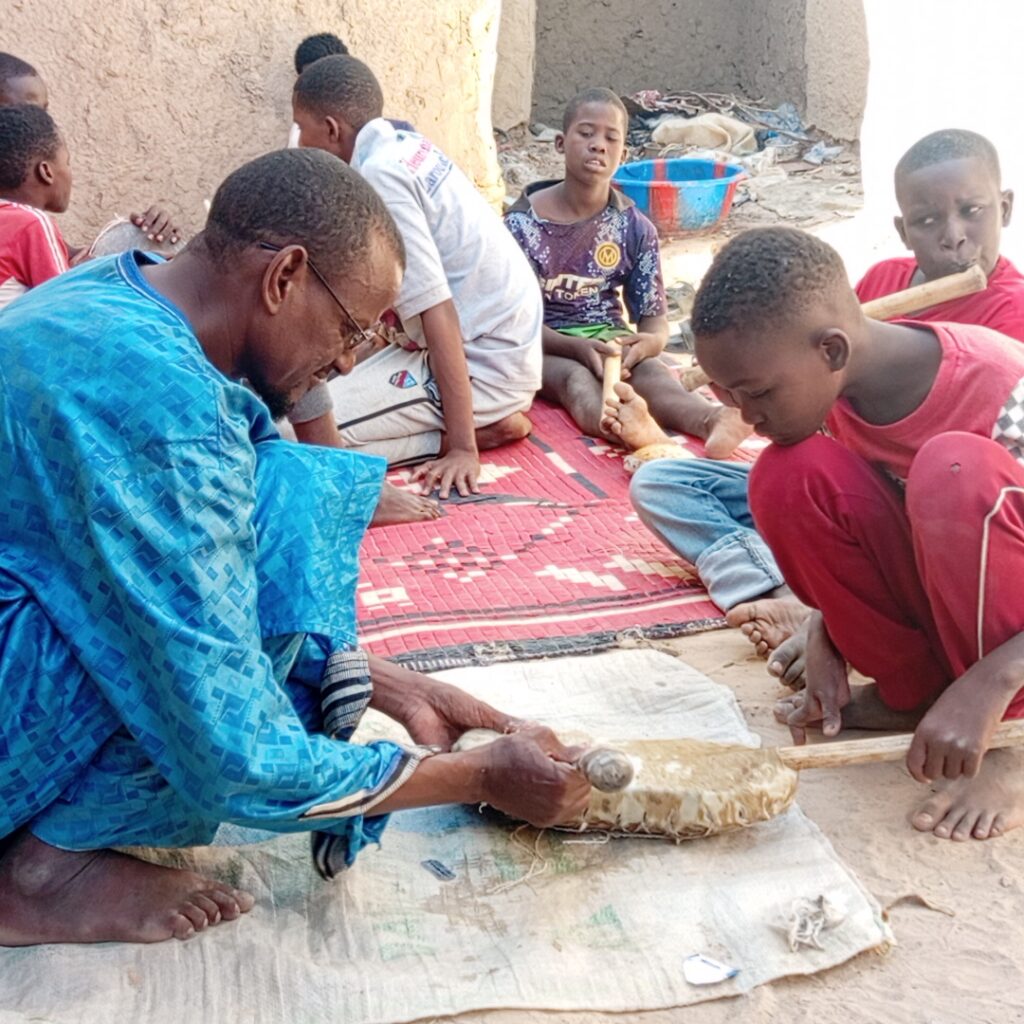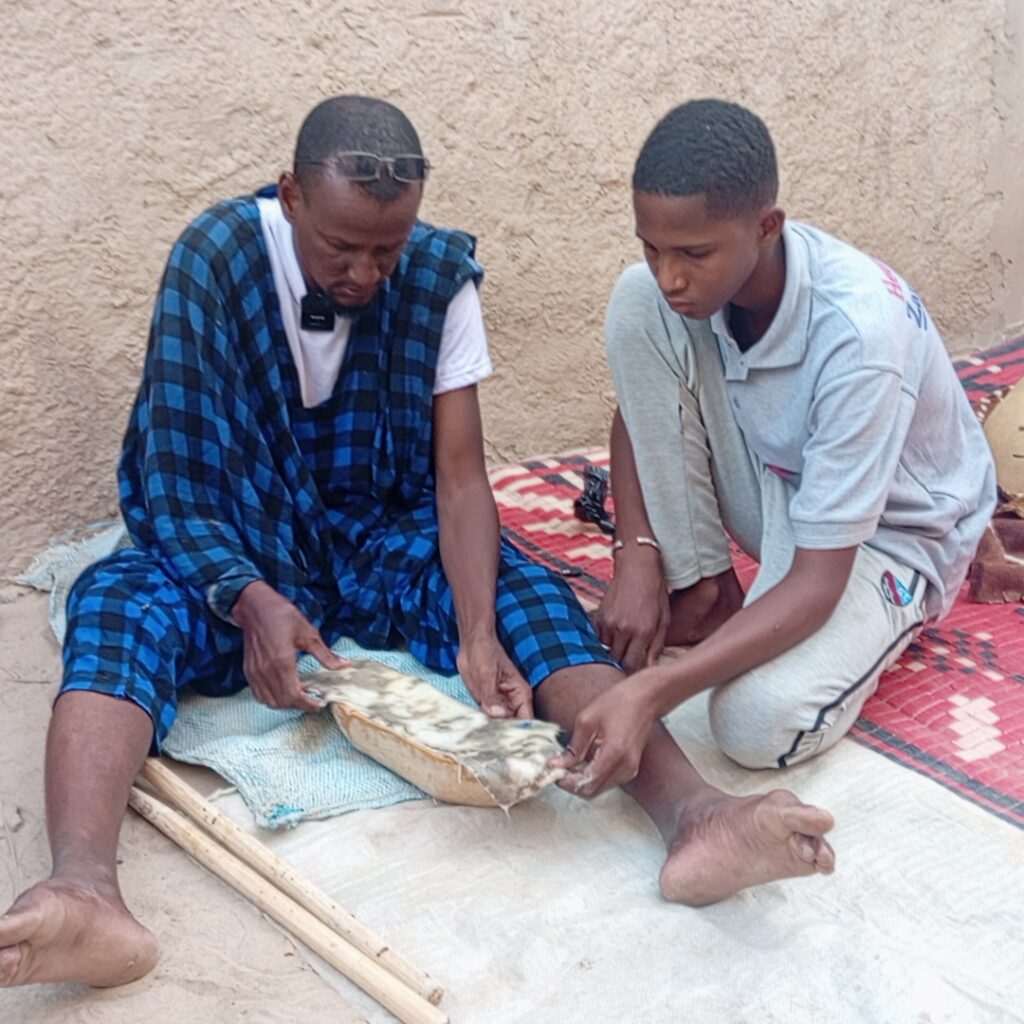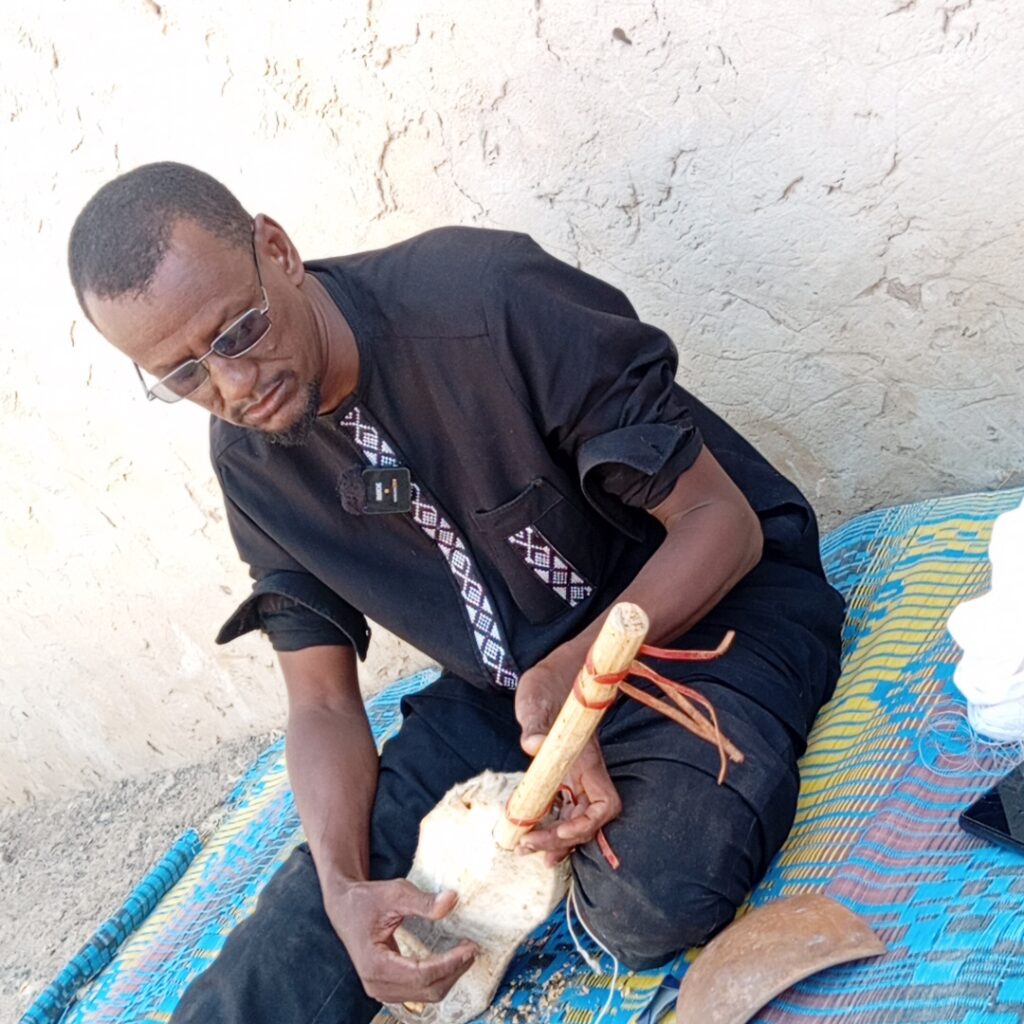A Two-Part Workshop
The crafting of the traditional Malian guitar, locally known as the Koubour, took place in two complementary phases at CFAIT between October 20 and 24, 2024. The session brought together 18 young participants under the guidance of two master artisans:
- Amadoune Sidi, a specialist in carving resonator bodies
- Aguissa Kouyaté, responsible for final assembly, tuning, and musical instruction

Phase 1: Woodworking with Amadoune Sidi
On the first day, Amadoune arrived with a large piece of wild date palm wood—valued for its heat resistance and excellent acoustic properties. In front of the students, he demonstrated how to carve two resonator bodies:
- Rough shaping with a mid-sized axe
- Hollowing out the interior with a smaller axe
- Smoothing the cavity using a hand plane
On the second day, students practiced the same steps under Amadoune’s supervision, crafting a third resonator using the techniques they had just learned.
Phase 2: Assembly and Finishing with Aguissa Kouyaté
On October 22, Aguissa took over the second phase of the workshop.
He introduced the materials needed to complete the instrument:
- Soaked cowhide
- Nylon strings
- Three rings made of dried hide (locally called Garreau)
- Two 50 cm carved wooden necks
- A calabash piece used for anchoring
- A knife for fitting adjustments

After stretching the cowhide over the wooden body, he inserted the neck underneath the skin and locked it in place with a sculpted calabash wedge. He then cut small notches into the neck to secure the Garreau rings at three positions—top, middle, and base. Each student was guided through the assembly of their own instrument.
Tuning and First Notes
By October 24, students completed stringing their instruments. The tuning system is entirely handmade: the Garreau rings slide along the neck, functioning like tuning pegs on a modern guitar.

Aguissa wrapped up the workshop with a hands-on introduction to tuning and playing. Using simple melodies and exercises, he helped the students produce their first sounds on the Koubour.
Participants: 18 youth
Instructors: Masters Amadoune Sidi & Aguissa Kouyaté
Dates: October 20–24, 2024
Location: CFAIT, Diré, Mali
Instruments built: 15 traditional Koubour guitars
Materials used: wild date palm wood, cowhide, nylon strings, calabash, hide rings (Garreau).

Add a Comment